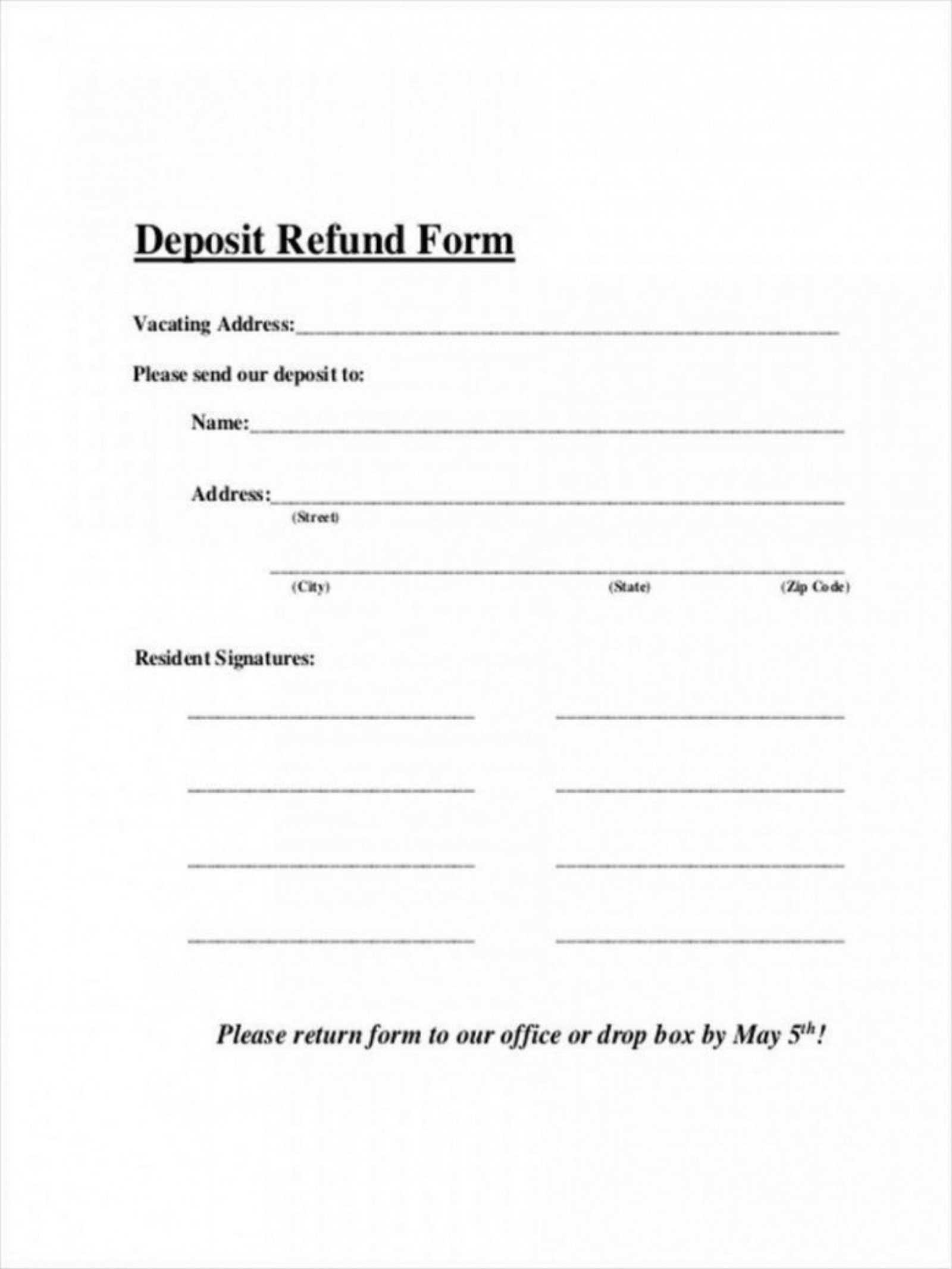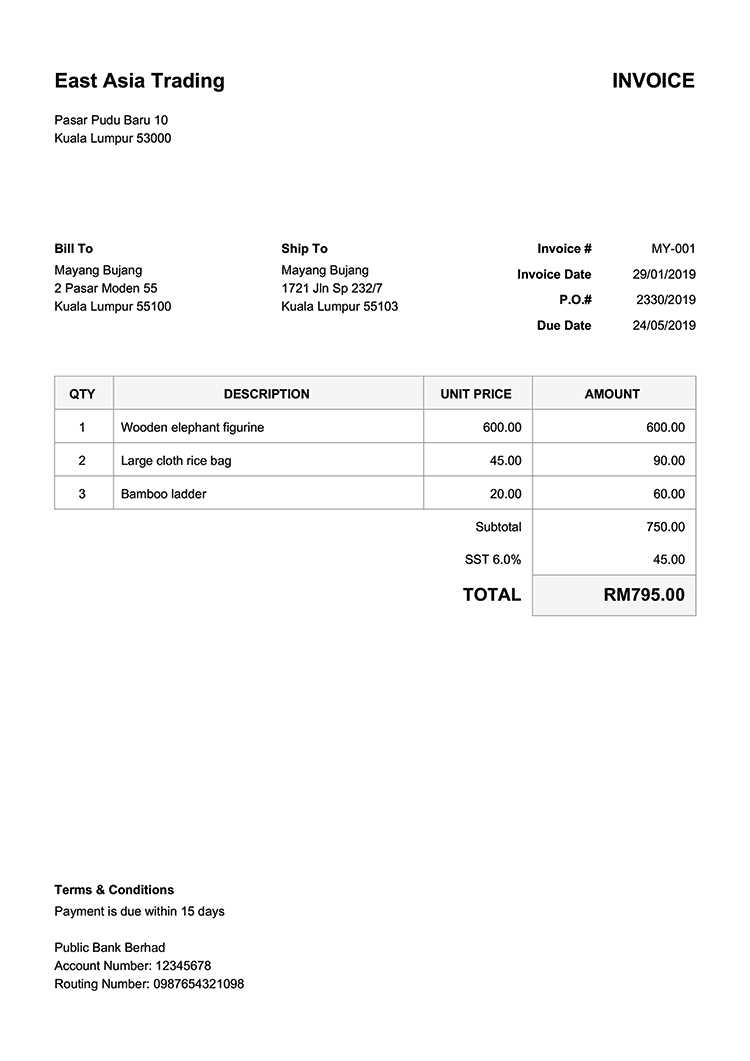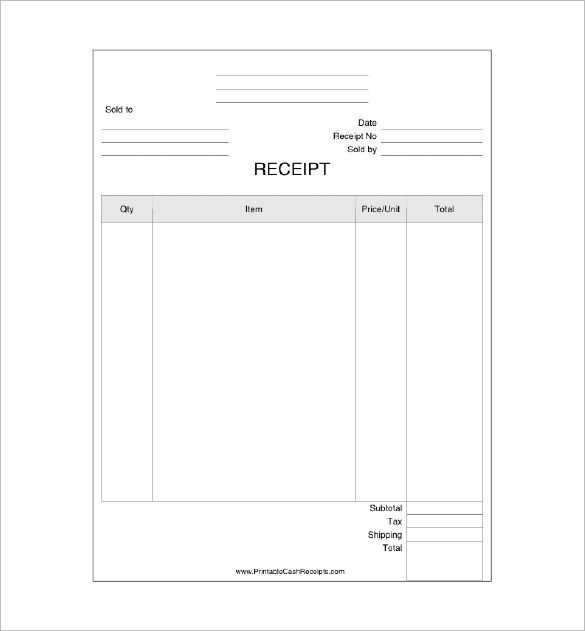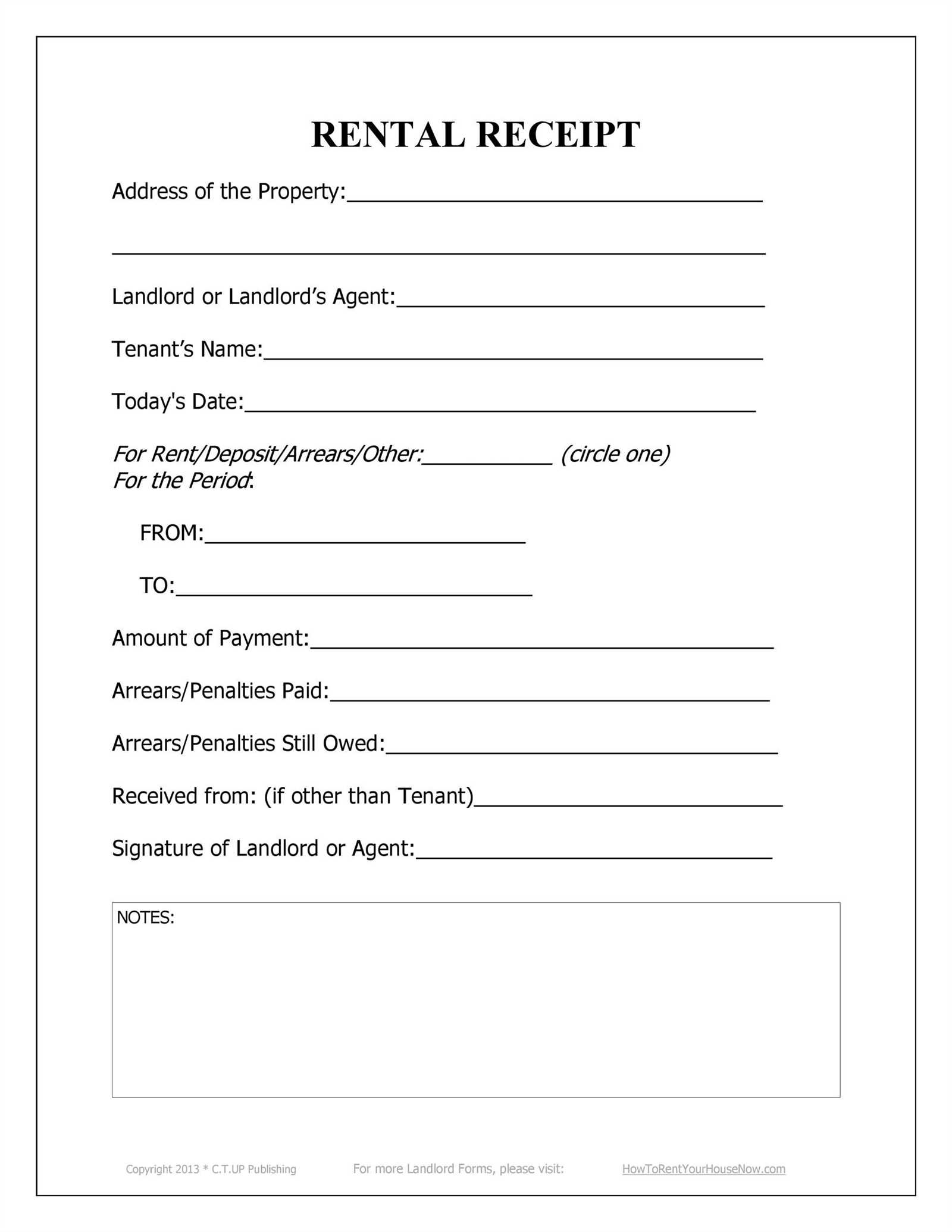
How to Use the Template
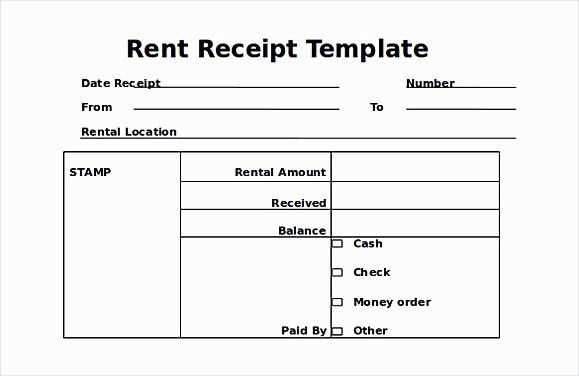
Download a free rent deposit receipt template and customize it for your property or rental agreement. A receipt should clearly state the amount received, the date, and details of the rental agreement. Here is an example of the key fields you should include:
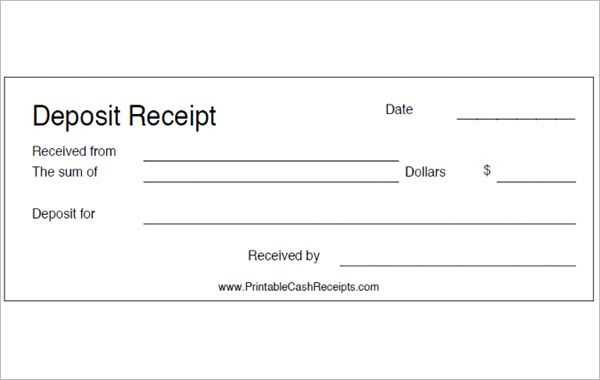
- Tenant’s Name – Ensure the tenant’s full name is listed to avoid confusion.
- Landlord’s Name – The name of the person receiving the deposit.
- Amount Received – Clearly indicate the amount of the deposit in both words and numbers.
- Payment Method – Specify whether the payment was made in cash, check, or by other means.
- Property Address – The address of the rental property should be included for reference.
- Date – The exact date when the deposit was paid is necessary.
- Purpose of Deposit – State that the deposit is for securing the rental property or as per the rental agreement.
- Additional Terms – Include any additional terms if needed, such as return policy for the deposit or any specific conditions.
How to Format Your Receipt
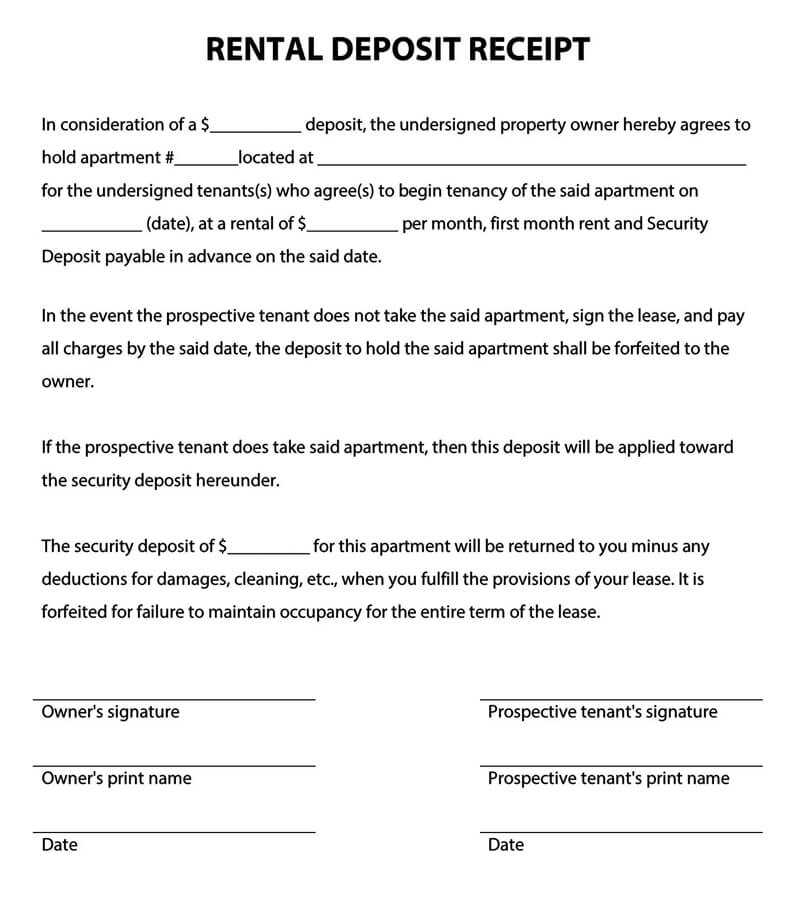
When creating the receipt, keep it simple and professional. Use a standard template with a clear structure to avoid confusion. Avoid unnecessary information, focusing on the basics: tenant and landlord details, payment terms, and a signature field for both parties.
Customizing Your Template
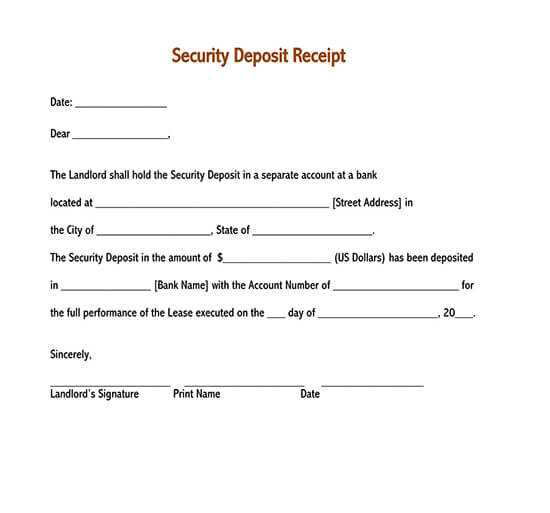
Make sure to personalize your template based on the specific needs of your property. The rent deposit receipt should match the terms outlined in the lease agreement. If the deposit includes both a security portion and an advance rent portion, make sure each is clearly outlined on the receipt.
Why You Need a Rent Deposit Receipt
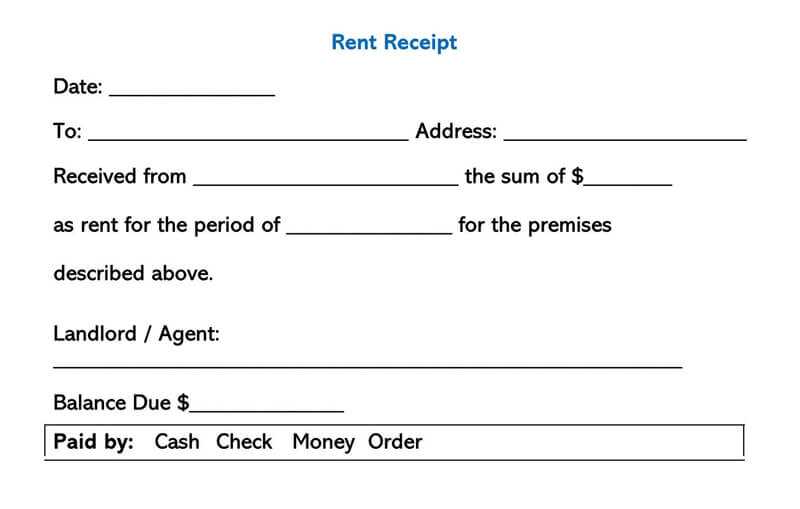
A deposit receipt protects both the landlord and tenant by providing proof of the transaction. It ensures that the tenant can show proof of payment if disputes arise, and it helps landlords track the amount received for each tenant.
Free Rent Deposit Receipt Template
How to Create a Deposit Receipt Without Legal Assistance
Key Information to Include in a Deposit Receipt
Customizing a Free Template for Your Agreement
How to Ensure Clarity in Receipts for Both Parties
Common Mistakes to Avoid When Filling Out a Deposit Receipt
Where to Find Free and Reliable Templates for Deposit Receipts
Creating a rent deposit receipt doesn’t require legal help. With a clear and accurate template, both parties can easily document the transaction. Start by including basic details such as the tenant’s name, landlord’s name, rental property address, and the amount of the deposit. This ensures that both the payer and the recipient are correctly identified, avoiding any confusion later on.
Be sure to mention the purpose of the deposit, whether it’s for security or another reason, as well as the payment method (cash, check, etc.). Additionally, include the date the deposit was made to track when the agreement took place. Make it clear whether the deposit is refundable and under what conditions it might be retained or returned.
Customizing a free template to fit your specific agreement is easy. Tailor the language to reflect your rental terms and conditions. Add sections that may apply to your situation, like deductions for damages or failure to meet lease requirements. Keep the language simple and direct so that both parties understand their rights and obligations.
Clarity is key. Avoid vague terms like “reasonable damage” or “standard condition” without defining them. Outline the criteria for what would cause deductions from the deposit and any timeframes for return. A well-structured receipt prevents misunderstandings and ensures both parties are on the same page.
Common mistakes include leaving out important details such as the agreed-upon amount or failing to specify the payment method. Also, not having both parties sign the document can lead to disputes later. Double-check the accuracy of names, amounts, and dates before finalizing the receipt.
Free and reliable templates for rent deposit receipts are available online. Many websites offer customizable options that include essential fields, saving time and effort. Make sure to use templates from trustworthy sources to ensure they meet your needs and reflect proper legal practices.
